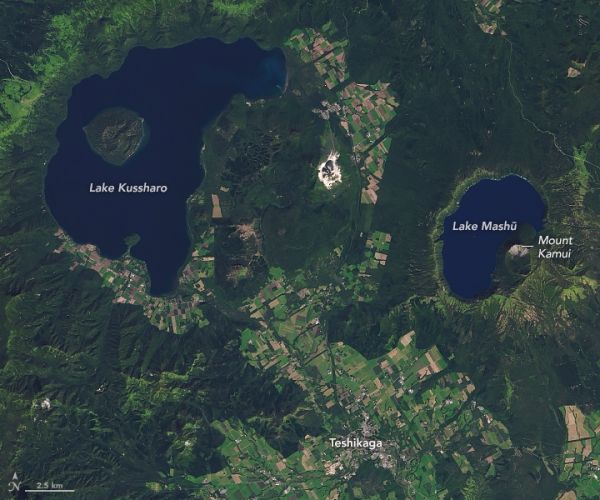In Japan, what do they call a parastic cone of a parasitic cone? Answer: Mount Kamui. The small volcano sits along the rim of the larger Mashū caldera, which is itself a volcano on the rim of the even larger Kussharo caldera in northeastern Hokkaido.
Volcanoes usually have a central vent at their summit that connects to an underground magma chamber, through which most volcanic materials pass during eruptions. But that central vent is not always the only route out. Sometimes central vents get plugged and pressure builds up enough that magma and volcanic gases find smaller, alternate routes to the surface. These secondary vents cause smaller volcanoes—called parasitic cones (also satellite or adventive cones)—to build up along the flanks or base of a larger volcano. The features sometimes grow into large volcanic centers themselves.
The Operational Land Imager (OLI) on Landsat 8 acquired this natural-color image of two parasitic cones in Hokkaido on September 27, 2019. The image also highlights calderas, the bowl-shaped volcanic basins that form when volcanoes erupt explosively or when the top of a volcano slumps into an empty or partly empty magma chamber. Since they are often enclosed by steep cliffs and lack outlets for water to run off, calderas often fill up with lakes.
Continue reading at NASA Earth Observatory
Image via NASA Earth Observatory


